Charles Della Santina, M.D., Ph.D.
- Director, Johns Hopkins Listening Center (Cochlear Implant Program)
- Professor of Otolaryngology - Head and Neck Surgery

https://www.hopkinsmedicine.org/profiles/results/directory/profile/0009415/charles-della-santina
Viagra dosages: 100 mg, 75 mg, 50 mg, 25 mg
Viagra packs: 10 pills, 20 pills, 30 pills, 60 pills, 90 pills, 120 pills, 180 pills, 270 pills, 360 pills
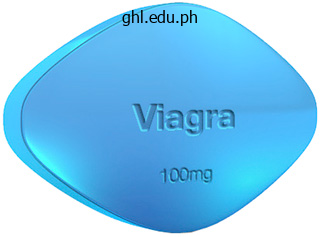
Purchase viagra 100 mg
Since pain entails the complete nervous system, it may be very important understand the individual parts along which the alerts travel. Transduction is the method of converting a noxious stimulation from tissue injury to a nociceptive signal. Finally, notion is the interpretation of the signal by cognitive and emotional responses within the mind, which considers context, previous experiences, and expectations. From an evolutionary perspective, this sequence was intended to shield towards further damage; nonetheless, given the lengthy cascade of biological occasions that transpire, maladaptation at any of the points alongside the chain can end result in pathological pain. Cohen Aching, throbbing, dull, pressure Uncommon Pain-induced weak spot Radiation Exacerbations Autonomic adjustments Distal, often in dermatomal distribution Common and unpredictable Color or temperature adjustments, swelling, or sudomotor activity May have hypersensitivity in quick vicinity of tissue harm. Ligand-gated ion channel receptors perform by activating ion channels or second messenger systems. Once activated by the ligand, second messenger techniques act through phospholipase-linked or adenylate cyclase-linked receptors to open ion channels within the cell membrane and initiate an motion potential. Data from Cohen and Mao [1] Transmission Nerve Fibers There are three primary nerve classes concerned in pain transmission: A�, A, and C afferent nerves. These nerves may be associated with mechanical nociceptors, mechanothermal nociceptors, and polymodal nociceptors, which reply to mechanical, chemical, and thermal noxious stimuli. Among the three types, the C afferent nerves are the smallest in diameter and are unmyelinated. These C nerves direct signals from visceral, thermal, autonomic, and polymodal nociceptors. Neuronal fibers from the A nerves terminate in free nociceptor endings, in addition to partially encapsulated nociceptive terminals. These nerve fibers generally terminate in encapsulated nonnociceptive endings, such as Pacinian corpuscles and Transduction Nociceptors the basic unit of step one alongside the pathway � transduction � is the nociceptor. These specialized neurons are delicate to three forms of injurious stimuli � mechanical, thermal, and chemical � and are constantly speaking with immune, inflammatory, vascular, and native cells to reply to any modifications in tissue chemistry, extracellular matrix, and other neuronal, endocrine, or systemic byproducts. Voltage-gated ion channels, ligand-gated ion channels, and ligand-mediated second messenger mechanisms facilitate detection of the noxious stimuli. Voltage-gated ion channels permit the inflow of sodium and calcium ions, which at a sure threshold will generate an motion potential that can relay the ache sign more proximally in the nervous system. After propagation of the impulse, an efflux of potassium ions by way of the channels enables the neurons to repolarize to their resting state. Under regular conditions, A nerves predominantly convey indicators of sunshine touch and pressure, but not pain. However in pathological conditions, they may undergo a phenotypic swap and acquire the capacity to increase the excitability of spinal twine nociceptive neurons. Within afferent nerves lie two forms of cutaneous nociceptive fibers, A and C fibers. Intuitively, A fibers are located within the A and A afferent nerves, whereas C fibers lie within C nerves. A fibers are rapid-conducting fibers that transmit "first ache," while C fibers are slower conducting and give rise to "secondary ache" or "late ache" sensations. Modulation Peripheral Mechanisms Peripheral sensitization is among the many first modulation events that happens in the peripheral nervous system. Sensitization is defined as a hyperexcitable state designed to shield the physique from continued hurt at the site of original tissue damage. In biochemical phrases, the persistently elevated stimulus degree causes the discharge of free fatty acids. In addition to catabolized fatty acids, a quantity of other mediators, similar to calcitonin gene-related peptide and substance P, increase vascular membrane permeability, thereby releasing more energetic byproducts including prostaglandins, bradykinin, progress components, and cytokines, which further sensitize nociceptors. Due to the quite a few mediators and byproducts concerned, peripheral sensitization is troublesome to treat pharmacologically given that there are multiple targets. The dorsal root ganglion is another site alongside the peripheral nervous system the place modifications in neuronal physiology can outcome in pathological pain. For instance, the phenomenon of spontaneous ache can originate from the dorsal root ganglion or anyplace distally alongside the injured peripheral nerve from ectopic discharges. In addition to upregulation of sodium channels, neuropathic pain can additionally be related to an increased expression of calcium channels, notably the subunit alpha-2-delta, in the dorsal root ganglion and spinal cord. This calcium channel subunit has been proven to be the site of therapeutic action of gabapentin and pregabalin in neuropathic ache circumstances, corresponding to nerve injury and diabetes [8].
Purchase viagra 100 mg without a prescription
Before nail insertion, the medullary canal often is reamed to allow use of a larger nail. Most nails are interlocked both proximally and distally with screws that cross from the bone via holes in the nail. Stainless metal pins are drilled into the proximal and distal fragments of the fracture via stab wounds in the pores and skin and subcutaneous tissues. Pin clamps and an external frame are connected and the fracture aligned with the assist of the I. Following fracture alignment, the pin clamps and frames are tightened to maintain fracture alignment. Wound irrigation and debridement often accompany application of the fixation body. A longitudinal incision is revamped the fractured medial and/or lateral malleoli. Dissection is carried instantly right down to the bone, and the fracture is identified and decreased underneath direct imaginative and prescient. The fractures are realigned under direct vision and glued and stabilized with pins, plates, and/or screws. The fracture is mobilized, often grafted with autogenous or allograft bone, and realigned. With an anterior strategy, a longitudinal incision is made anteromedial or anterolateral to the shaft of the tibia. If the tibia is approached with a posterolateral incision, the affected person is turned susceptible and a longitudinal incision is made simply posterior to the fibula. Dissection is carried down posteriorly to the interosseous membrane, to the tibia, and the procedure becomes similar to the anterior strategy. In the case of a malunion, the bone may be osteotomized with a saw or osteotomes to enable realignment. If skeletal fixation is used, a plate may be attached to the bone via the same incision. Alternatively, an intramedullary nail may be placed through an incision anterior to the tibial tubercle. If an intramedullary device is used, the canal could also be reamed with intramedullary reamers prior to placement of the nail. A third sort of skeletal fixation is the exterior fixator that stabilizes the nonunion through percutaneous pins positioned into the proximal and distal tibia, that are then spanned by a tool with pin clamps at both ends. An intraop x-ray is commonly used to affirm fixation and placement of devices; alternatively, an I. Variant procedure or approaches: Autogenous bone grafting from the iliac crest is often used to stimulate healing. An incision is made instantly over the iliac crest, and muscles are stripped from the crest and table of the ilium. Osteotomes and gouges are used to take away both the internal or outer table of the ilium and cancellous bone between the 2 tables. The ankle joint generally is inspected by way of anterolateral and anteromedial portals (entry wounds). If the ankle joint is tight, a mechanical distractor (external fixator distraction apparatus spanning the ankle joint) may be used. The distractor is attached to the bones through percutaneous pins, as within the case of the applying of an exterior fixator. The joint often is opened with an anterolateral midline or anteromedial longitudinal incision. Tendons and neurovascular constructions are carefully retracted to expose the joint capsule, which is then opened in line with the pores and skin incision. After intraarticular pathology is addressed, careful closure of the capsule is performed, taking care to get hold of good hemostasis.
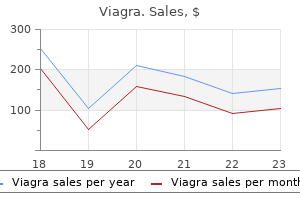
Order viagra 100 mg on-line
Confirmation that the needle tip is inside a joint and details about the morphology of the joint capsule four. Confirmation that the needle tip is throughout the vicinity of a selected spinal nerve root 5. In the ultimate analysis, the injectionist should course of necessary data from a number of totally different sources to find a way to make an knowledgeable conclusion as to the situation of the needle tip. The spread pattern of x-ray distinction dye Injection of Active Medication Injection of active medicine creates powerful biological results and has the potential to cause injury, especially with respect to particulate steroid preparations and native anesthetics. The manipulation of needles and applicable, safe placement of needles and other instruments in interventional ache management settings safely require superior tactile abilities, complete data of anatomy, and experience with fluoroscopy. It is incumbent on the interventional pain physician to guarantee that the procedure setting is acceptable for effectivity and affected person security, previous to beginning an interventional pain administration process. Setting up the room, orienting the fluoroscopy, and positioning the affected person are essential for acceptable needle placement. Visualizing the target, fastidiously selecting the pores and skin insertion point, and advancing the needle in small, incremental trend to the goal will facilitate process success. The art of safely and accurately placing the needles into the physique and directing them to suspected pain-generating targets takes time to develop. Beginners should begin with easy lumbar procedures and solely advance to greater danger cervical procedures as expertise dictates. In the modern period, using fluoroscopy to place needles for interventional ache procedures is obligatory. For profitable needle placement, planning of the needle path and its orientation to the fluoroscopy beam is crucial. Whenever a spinal needle turns into troublesome to see on the fluoroscopy monitor due to its relative density, insert the stylette to improve needle density and improve visibility. Steering needles within the physique is an artwork and a science which is decided by the form of the needle tip and the bodily forces imported to the needle shaft. Prior to lively injection, the injectionist ought to assure the placement of the needle tip by fluoroscopy and by the presence of any bony landmarks involved with the needle tip, the results of needle aspiration, and the spread of the pattern of x-ray distinction dye. Acknowledgments this e-book chapter is modified and up to date from a earlier guide chapter, "Needle Manipulation Techniques" by David M. Pictures from the history of otorhinolaryngology highlighted by exhibits of the German historical past of medication Museum in Ingolstadt. Falco eleven Introduction Low back and decrease extremity pain could additionally be secondary to degenerative disc disease with disc disruption, disc herniation, disc protrusion, and disc extrusion; central or foraminal stenosis; discogenic pain with out disc herniation, facet joint pain, or sacroiliac joint pain; and post-lumbar surgical procedure syndrome amenable to appropriate prognosis and administration with surgical and nonsurgical interventions. Surgery is indicated mostly for 3 circumstances together with disc herniation, spinal stenosis, and spondylolisthesis but in addition performed incessantly for discogenic ache. Access to the epidural space is out there by caudal, interlaminar, and transforaminal approaches [1, 2]. The growth of epidural injections in managing persistent low back and decrease extremity ache started with caudal epidural L. Thus, the literature described substantial differences in techniques and outcomes among the many three approaches [1, 2]. Due to the inherent variations, differences, advantages, and disadvantages applicable to every technique, together with the effectiveness and outcomes, the three procedures are considered as separate entities. Further, response to epidural injections for varied pathological situations can also be variable with outcomes assessed based mostly on pathology for each strategy. History the first description of epidural injection being placed spinally was by Corning in 1885 [3]. In 1901, caudal epidural injections have been described by Sicard [4], Pasquier and Leri [5], and Cathelin [6] independently for the reduction of sciatica or lumbago [4], for surgical procedures [5], and for the aid of ache due to inoperative carcinoma of the rectum [6]. The extension of caudal epidural injections for the remedy of sciatica has been attributed to Caussade and Queste in 1909 [7], Viner in 1925 [8], Evans in 1930 [9], Brown in 1960 [10], and Cyriax from 1937 to the Seventies [11, 12]. Interlaminar epidural injections have been described in 1933 by Dogliotti [13] introducing the loss of resistance technique, with a lubricated glass or plastic syringe partially full of air or saline and with a hanging-drop technique by Gutierrez [14]. The earliest description of corticosteroids by epidural administration coincides with the event of the transforaminal approach [15, 16]. Robecchi and Capra [15] administered periradicular injection of hydrocortisone into the primary sacral nerve root in 1952, reporting aid of lumbar and sciatic pain in a lady, published in Italian literature.
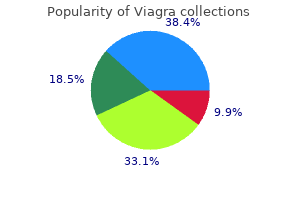
Viagra 100 mg with mastercard
Critically ill neonates with obstructed pulmonary venous return must bear emergent correction after preliminary stabilization. In most instances, the proper and left pulmonary veins drain into a typical pulmonary venous sinus, permitting for its anastomosis to the left atrium for a definitive restore. The cardiac apex is lifted up, and the pulmonary veins are recognized by way of the posterior pericardium. The left atrium is then opened transversely with extension onto the left atrial appendage, adopted by the direct anastomosis of the pulmonary venous confluence to the left atrium. The coronary heart is de-aired, aortic cross-clamp is launched, and the patient is rewarmed and separated from bypass. Pathophysiologically, this discordant ventriculoarterial configuration ends in systemic and pulmonary circulations placed in a parallel (normally in series) configuration. In the Fifties, a wide selection of partial physiologic corrections were developed during which the pulmonary veins or the vena cava were transposed to the alternate atria. More full physiologic correction was obtained by atrial swap operations, described by Senning in 1959 and Mustard in 1963, by which systemic and pulmonary venous return have been baffled to the appropriate ventricles. Postop problems with the atrial change operations, however, led to the development of the extra "anatomic" arterial swap operations described by Jatene, Yacoub, and others beginning in the 1970s. The nice vessels are transsected, and the coronary arteries are removed from the aorta and positioned into the proximal pulmonary artery (neoaorta). C: the distal aorta is introduced behind the pulmonary artery bifurcation (Lecompte maneuver), and the neoaorta anastomosis is accomplished. The aortic cross-clamp is utilized, adopted by cardioplegic arrest and induced hypothermia. The ascending aorta is transected just above the sinotubular junction at and the pulmonary trunk is transected simply proximal to its bifurcation. Two buttons from the "neopulmonary artery" (former aortic root) containing the origins of the left and proper coronary arteries are transposed and anastomosed to the "neoaorta" (former major pulmonary trunk). The distal aortic segment is anastomosed to the neoaorta, and the distal bifurcated pulmonary artery phase is anastomosed to the neopulmonary artery. The aortic cross-clamp is removed, and rewarming is begun during the neopulmonary arterial anastomosis. These embody pulmonary stenosis, pulmonary atresia, straddling atrioventricular valves, hypoplasia of ventricular chambers, and coarctation or interruption of aorta. A easy rule that accounts for nearly all variations is that the coronaries arise from the sinuses of Valsalva, which face the pulmonary artery, and follow the shortest route to their final destination. This single great artery provides rise to the pulmonary, systemic, and coronary circulations. An anatomic classification scheme proposed by Collett and Edwards in 1949 describes four kinds of truncus. Currently, early major restore is carried out in the course of the first few weeks of life. There are a number of particular considerations related to this restore that warrant mention. The truncal valve may exhibit insufficiency, necessitating valve repair or replacement utilizing a cryopreserved aortic or pulmonary homograft. In some patients, an associated interruption of the aortic arch has to be addressed and will increase the complexity of the procedure. Coronary artery abnormalities are common in patients with truncus arteriosus and may contribute to their mortality. There are three kinds of tricuspid atresia, based mostly on the relationship of the great vessels to the ventricles, in any other case generally known as ventriculoarterial concordance. Type I, the most common (60�80%), consists of regular ventriculoarterial concordance. The subsequent definitive surgical administration consists of a bidirectional Glenn shunt and a modified Fontan process.
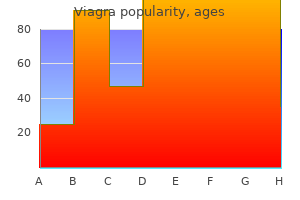
Buy generic viagra 75 mg on-line
Technical Aspects Thoracic epidural injections are administered by two approaches, interlaminar and transforaminal, with distinctly totally different technical approaches. Thoracic Epidural Injections � In the thoracic spine, the angulation of spinous processes is variable. The angulation is delicate from T1 to T4 and T9 to T12, whereas angulation is more marked downward from T5 to T8, influencing the convenience of entry into the epidural house, with elevated technical problem between T5 and T8. For all continual ache settings, fluoroscopic steering for epidural procedures is crucial: � the wrong needle placement has been reported by multiple authors in cervical and lumbar backbone. A paramedian approach is finest utilized in sufferers with unilateral radicular pain syndromes. If no further epidural (intravascular, subarachnoid, or soft tissue) contrast pattern is appreciated with adverse aspiration with 3�5 mL of distinction, an injectate of native anesthetic, preservative-free lidocaine zero. The "railroad observe" appearance is characteristic of epidural localization of the distinction. Contrast injection will reveal subarachnoid patterns: � Contrast can be injected to perform myelograms. This space incorporates solely a small quantity of serous fluid between opposing membranes [63, 64]. Most commonly, posterior subdural injections are carried out, however anterior subdural injections may be carried out. The diploma of effects is determined by the extent of subdural compartmentalization and the quantity injected: � Injection into the anterior subdural area could also be associated with high motor and sensory blocks and even loss of consciousness [65], whereas posterior subdural injection often presents as a failed spinal block or a patchy epidural block of gradual onset, requiring massive volumes of native anesthetic for correction. The posterior border of the fluid assortment is linear (dura mater), while the anterior border is somewhat extra irregular within the arachnoid mater. Thoracic Transforaminal Epidural Injections � Thoracic transforaminal epidural injections are performed occasionally. Critical Anatomy � the spinal branches are the principle arteries of supply to all bony parts of the vertebra and to the dura and epidural tissues; they also contribute to the availability of the spinal twine and nerve roots via radicular branches. Posterior spinal arteries Anterior spinal artery Anterior segmental medullary artery Anterior radicular artery Posterior radicular artery Branch to vertebral physique and dura mater Spinal branch Dorsal department of posterior intercostal artery Posterior intercostal artery Paravertebral anastomoses Prevertebral anastomoses Thoracic (descending) aorta Section by way of thoracic degree: anterosuperior view Sulcal (central) branches to proper side of spinal cord Posterior radicular artery Anterior segmental medullary artery Pial arterial plexus Anterior and posterior radicular arteries Anterior spinal artery Right posterior spinal artery Peripheral branches from pial plexus Sulcal (central) branches to left aspect of spinal cord Left posterior spinal artery Posterior radicular artery Arterial distribution: schema Anterior segmental medullary artery Pial arterial plexus Note: All spinal nerve roots have associated radicular or segmental medullary arteries. Reproduced Netter Medical Illustration used with permission of Elsevier) 12 Thoracic Epidural Injections 201 � Each artery divides right into a series of major branches (abdominal wall, intermediate or spinal canal, and the posterior body wall branches) just outdoors the level of the intervertebral foramina. Care have to be taken to perform procedures in a manner which minimizes the risk of the needle or instrument encountering the artery. Technical Implications � Thoracic transforaminal epidural injection procedures could additionally be performed just like lumbar. Supraneural has been described as the secure triangle strategy in the thoracic and lumbar spine: � Thoracic transforaminal injections share multiple dangers similar to cervical and lumbar transforaminal epidural injections with general antagonistic results associated to inserting a needle into an intervertebral foramen, with vital neurovascular problems, along with additional issues related to puncturing the lung. They additionally assume an artery can be entered and dye and/or native anesthetic injected and then exited without local sequelae secondary to injury to the artery. The local anesthetic check dose suffers from difficulty in measuring outcomes parameters. These mechanisms are local phenomena based on penetration and injury to the artery itself. These embody intimal flaps, vasospasm, thrombosis, and transection of the artery. Of observe, the outer diameters of the artery in the foramen and a 22 g needle are quite similar. There now could be angiographic evidence of obstruction to flow via an injured radiculomedullary artery following a right L2�3 transforaminal epidural steroid injection [79]. Supraneural Approach � Supraneural approach has been commonly used with oblique or posterior approach: � For the posterior strategy, the patient is positioned within the susceptible place with a firm padding under the chest, and the fluoroscopy unit is positioned with the spinous process in the middle of the spine. A small quantity of distinction is injected, and the sample of dispersion into the nerve root is famous: � If the needle has penetrated the epiradicular membrane surrounding the nerve root, an applicable and optimistic picture of the nerve root will be seen on fluoroscopy with acceptable dispersion of the distinction. If paresthesia is observed, the needle should be withdrawn roughly a millimeter or so, and distinction is injected.
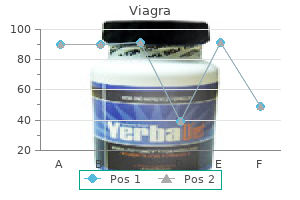
Viagra 100 mg generic with amex
This is accompanied by foot drop, abnormal gait, and incapability to evert the ankle due to peroneal muscle weak spot. Structural abnormalities corresponding to arthritis, vascular malformations, cysts, and lipoma. The ache is typically neuropathic in nature and could additionally be worst at the ball of the foot. Pain is often worse with activity and prolonged standing and will feel worse at evening despite elevation. Patients have elevated threat of falls as a result of foot numbness and motor weakness within the intrinsic foot musculature. Motor impairment of the intrinsic muscles of the foot happens late within the course and could also be elicited by asking the patient to abduct their toes. Ultrasound Guided � Ultrasound guidance improves the success fee of this injection [35]. This situation is named after Thomas Morton, one of the first physicians to report it in 1876 [36]. Anatomy � the tibial nerve originates from the division of the sciatic nerve proximal to the popliteal fossa, together with the common peroneal nerve. The tarsal tunnel runs along the posterior medial aspect of the ankle and foot, bounded by the talus, navicular bone, and medial calcaneus. The widespread digital nerves are susceptible to harm as they cross beneath the deep transverse metatarsal ligament. This entrapment may be exacerbated by toe extension because of ballet or high-heeled sneakers [37]. Similar to plantar fasciitis, the pain may be seen upon first stepping down from mattress in the morning. The pain is neuropathic in sort, with both sharp and burning sensations described on the solely real of the foot and toes. The affected person may describe altered sensation on the only real of the foot and will discover strolling barefoot on a tough surface painful. The lateral squeeze check consists of palpating this interspace with the fingers of one hand whereas laterally compressing the metatarsals along with the other. Side Effects and Complications the side effects of decrease extremity nerve blocks embrace the widespread risks of bleeding, hematoma, infection, and nerve harm. Some injections, such as those of the genitofemoral nerve, danger damage to the spermatic twine or other delicate structures as well. Some injections into enclosed areas such because the tarsal tunnel might worsen symptoms through compression until small injection volumes are used. Other injection websites, such as the common peroneal nerve at the fibular head, are very superficial and danger skin atrophy with massive doses of steroid. Epinephrine or other vasoconstrictors could trigger vasoconstriction of the small vessel or local ischemia. Anatomy � the digital nerves originate from the terminal branches of the posterior tibial nerve: the calcaneal, lateral, and medial plantar nerves. The decrease extremities are a frequent web site for the event of mononeuropathies, second solely to forearms and palms. Knowledge of the sensory and motor distributions of nerves is the best information to analysis, with imaging and electrodiagnostic testing primarily serving to confirm diagnoses. Many of those procedures resemble regional anesthesia techniques; nonetheless, the volume of native anesthetic utilized should be decrease in most cases for diagnostic nerve blocks. This raises the danger of skin atrophy and makes good approach and infiltration of anesthetic necessary for patient tolerance. These structural constraints restrict the amount of injectate that can be safely used. Ultrasound Guidance � the affected person is positioned within the supine position with the affected limb extended and supported and ankle in full dorsiflexion. Ultrasound-guided interventional procedures for sufferers with persistent pelvic pain � an outline of strategies and review of literature.
Diseases
- Retinal dysplasia X linked
- Zimmerman Laband syndrome
- Pseudomonas aeruginosa infection
- Diffuse parenchymal lung disease
- Batrachophobia
- Gorlin Chaudhry Moss syndrome
Purchase 50 mg viagra mastercard
Precautions � Relative contraindications to interventional techniques have been described in sufferers receiving remedy with antithrombotics and anticoagulants [2, 89�97]. Safety must be considered in reference to thromboembolic phenomenon. In these cases, it might be advisable to permit patients to proceed anticoagulation during side interventions. Pain Pain at the web site of the needle insertion Exacerbation of current ache Pain within the spine Infection Soft tissue abscess Epidural abscess Facet joint abscess Meningitis Encephalitis Bleeding Soft tissue hematoma Epidural hematoma Spinal wire hematoma Nerve root sheath hematoma Steroid effects Trauma Soft tissue Medial department Nerve root Spinal cord Inadvertent injection Dural puncture Subdural injection Epidural injection Foraminal injection Intravascular injection Radiofrequency Nerve root ablation Spinal cord ablation Dysesthesias Allodynia Hypoesthesia Local anesthetic results bacterial meningitis, and unwanted effects related to the administration of steroids, local anesthetics, and other medication (Table 21. Side Effects and Complications � Complications from intra-articular injections or medial department blocks in the cervical spine are exceedingly uncommon [2, 13, 25, 63�70]. Cervical side joints have been shown to be able to being sources of pain in the neck and referred pain within the head and higher extremities. Cervical aspect joints are well innervated by the medial branches of the dorsal rami. Based on responses to controlled diagnostic blocks of cervical aspect joints, in accordance with the standards established by the International Association for the Study of Pain, the prevalence of cervical aspect joint pain has been decided to be 36�67%. To keep the validity of diagnostic blocks, either comparative local anesthetic blocks or placebocontrolled blocks have to be performed as a end result of single blocks carry a false-positive fee of 27�63%. Multiple efficient and therapeutic modalities are available for managing cervical side joint ache. A systematic evaluation and best proof synthesis of the effectiveness of therapeutic facet joint interventions in managing persistent spinal pain. Referred ache distribution of the cervical zygapophysial joints and cervical dorsal rami. Studies on the cervical facet joints using arthrography of the cervical facet joint. Medial branch blocks are specific for the analysis of cervical zygapophysial joint ache. Immunohistochemical demonstration of nerve fibers within the synovial fold of the human cervical side joint. Demonstration of substance P, calcitonin gene-related peptide, and protein gene product 9. Recording of neural activity from goat cervical side joint capsule utilizing custom-designed miniature electrodes. Adequate coaching and experience, proper technique, meticulous adherence to safety pointers, and highquality fluoroscopic imaging tools are needed prerequisites for the safe and efficient injection of cervical structures. Cervical zygapophysial (facet) joint pain: Effectiveness of interventional management strategies. Chronic cervical zygapophysial joint pain with whiplash: a placebo-controlled prevalence study. Distribution of A-delta and C-fiber receptors within the cervical facet joint capsule and their response to stretch. Neurophysiological and biomechanical characterization of goat cervical side joint capsules. Cervical zygapophysial joint pain after whiplash damage, precision diagnosis, prevalence, and evaluation of treatment by percutaneous radiofrequency neurotomy [doctoral thesis]. Activating transcription factor 4, a mediator of the built-in stress response, is elevated in the dorsal root ganglia following painful aspect joint distraction. An intact aspect capsular ligament modulates behavioral sensitivity and spinal glial activation produced by cervical side joint tension. Vivo cervical side capsule distraction: mechanical implications for whiplash and neck pain. Simulated whiplash modulates expression of the glutamatergic system within the spinal wire suggesting spinal plasticity is associated with painful dynamic cervical facet loading. Differences in sensory processing between continual cervical zygapophysial joint pain sufferers with and without cervicogenic headache. Increased interleukin-1 and prostaglandin E2 expression within the spinal twine at 1 day after painful aspect joint harm: evidence of early spinal inflammation.
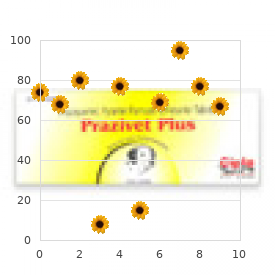
100 mg viagra order overnight delivery
After unfavorable aspiration, injection of distinction under fluoroscopy is beneficial to guarantee appropriate placement of the needle. If the needle tip is directed too medially, it could trigger inadvertent puncture of the vertebral artery or the dural sleeve. The injectate could include either local anesthetic alone or native anesthetic with a corticosteroid. Due to the potential for arterial injection of treatment, the present authors suggest that, if a steroid is intended for use, soluble medication such as dexamethasone must be used to the exclusion of insoluble. Therefore, that is the drug of selection by the current authors when injecting the atlanto-axial or atlanto-occipital joints with or without ultrasound guidance. Atlanto-Axial Injection Under Fluoroscopic Guidance the patient is equally positioned and prepared as above. It is critically necessary to regulate the C-arm and clearly visualize the atlanto-axial joint. The goal for atlanto-axial joint injection is the area between the exiting C2 root and the vertebral artery. Once the image is optimized under anterior-posterior fluoroscopic steerage, a needle ought to be directed toward the junction of the middle and lateral thirds of the posterior facet of the joint to avoid the C2 nerve root medially or the vertebral artery laterally. A lateral radiograph should be obtained to determine acceptable needle placement inside the atlanto-axial joint. After negative aspiration, injection of contrast underneath live fluoroscopy is recommended to guarantee correct needle placement. Barring intravascular unfold of distinction, medication can be incrementally injected with intermittent 22 Atlanto-Occipital and Atlanto-Axial Joint Injections 419. Atlanto-Axial: Ultrasound-Guided Technique the patient is positioned comfortably within the prone place with a small roll or towel positioned under the chin to accentuate cervical flexion. Both high- or low-frequency transducers can be utilized for this procedure depending on physique habitus. The ultrasound transducer is placed within the transverse place midline to visualize the occiput. The C2 spinous process is the first and most superior cervical vertebrae with a bifid spinous course of. When the C2 spinous process and lamina are recognized, the transducer is moved laterally to determine the exiting C2 nerve root. Moving the ultrasound probe additional laterally, the vertebral artery can be recognized. The target for an atlanto-axial joint injection is the house between the exiting C2 root and the vertebral artery. As an additional assurance of correct needle tip placement, an injection of distinction beneath reside fluoroscopy could also be undertaken to guarantee appropriate placement of treatment. The quantity of injectate and consistency of the injectate ought to be lower than 1 mL as beforehand discussed. Contraindications to atlanto-occipital and atlanto-axial joint injection embrace: � � � � � � � � Infection at the injection web site Coagulopathy Cervical backbone instability Previous cervical fusion at that stage Arnold-Chiari syndrome Fracture of the dens Inability to lie prone Inability to provide informed consent from intravascular injection that leads to compromised blood move to the brain and spinal twine, and vital morbidity and mortality have been associated with these procedures [30, 31]. Inadvertent intravascular injection of local anesthetic can result in anesthetic toxicity, presenting first with indicators and symptoms of anesthetic toxicity to the central nervous system together with a metallic a taste in the mouth and ringing within the ears. This could also be followed by the development of ataxia, dizziness, or seizures depending upon the dose of local anesthetic injected and the rate of vascular absorption. Higher doses or rapid absorption centrally of local anesthetic can lead to cardiovascular system toxicity after the preliminary central nervous system manifestations. Injection of insoluble (particulate) steroids might lead to embolic infarction of the central nervous system. Subarachnoid administration of native anesthetic on this area can lead to an instantaneous total spinal anesthetic. These injections are contraindicated in patients with cervical joint hypermobility or joint instability or in those that are taking antiplatelet medication or other anticoagulation medicines.
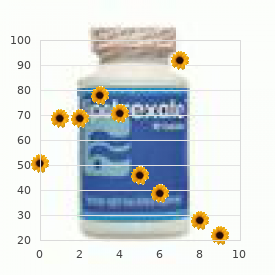
50 mg viagra best
The analysis will assist identify potential secondary achieve issues and untreated psychological disorders [15]. Most practitioners carry out an intrathecal catheter-based trial for intrathecal opiates and think about single-shot trials for Prialt [17]. With so many medicine that can be utilized in a pump, some implanters have recently argued towards the need for trial. The argument is that there are heaps of different medication and combos that can be thought-about, and it could possibly take months to find the best drug and dose [18]. However, today, many insurers require a catheter-based trial to proceed with an implanted pump. Permanent Implant � Work-up: An applicable work-up typically entails an applicable history physical examination, laboratory tests, and imaging research. The bodily examination ought to embody an examination of the lumbar spine and stomach. When implanting the device, care ought to be taken to keep away from putting the pump to close to the rib margin or the iliac crest. This can be achieved by marking the positioning preoperatively with the patient in the sitting position. Intravenous preoperative antibiotics are sometimes administered a minimum of 30 min previous to pores and skin incision with protection of typical gram-positive flora. It is often finest, if a affected person can tolerate it, to insert the catheter portion of the system underneath gentle sedation with native anesthesia supplement. This will allow for patient suggestions for improved security and reduced danger of neurological injury when putting the catheter. Once the catheter is in place, a spinal anesthetic can be administered via the catheter to present anesthesia for the rest of the implant. The epidural area can first be identified utilizing the loss of resistance technique. The final location of the catheter can either be within the low thoracic backbone or extra cephalad for higher chest wall and upper extremity problems. Once the whole circumference of the needle is free, the needle may be removed and the proximal catheter finish introduced into the wound to exit the midline incision. Some practitioners will deliver together a small fold of fascia on either facet of the anchor and suture to additional minimize the chance of catheter migration out of the intrathecal house. Abdominal Incision � the previously marked abdominal web site is infiltrated with local anesthetics. A small pocket is created large sufficient to hold the implanted pump with out placing tension on the belly wall. However, you will need to make sure the pocket is small enough to decrease the danger of rotation. An abdominal binder should be used for the primary 30 days until a capsule varieties to maintain the pump in place: � the back incision is tunneled to the belly incision, and the catheter is linked to the implanted pump. All wounds are meticulously irrigated and hemostasis is obtained prior to closure. It is also acceptable to keep the pump on minimal price till the first postoperative visit. In this case, the pump can then be began within the workplace with no priming bolus because the diffusion of medication from the reservoir will equilibrate within the catheter. Some advocate this as it avoids a priming bolus and the chance of bolus drug dosing as a result of the rate of diffusion exceeding the priming bolus price. Side Effects and Complications There are a number of issues that may happen with intrathecal therapy [25, 26]. Complications can basically be subdivided in to two facets: (1) the preliminary technical implantation of the pump and (2) long-term issues associated with the remedy (Table forty five. With acceptable workup, good surgical method, and postoperative vigilance, the problems should be uncommon. Drugs There are multiple medication which might be widely used for intrathecal administration for ache and spasticity. In spite of this, there are quite a few drugs and receptor websites that have been evaluated as possible targets for intrathecal analgesia [22, 23].
Order viagra 50 mg online
Fracture extension or tumor destruction of the posterior vertebral body cortex will increase the chance of posterior cement extravasation. Particular precaution is needed when cement is injected in these circumstances since a rapid injection may find yourself in posterior extravasation and doubtlessly compromise the spinal cord or nerve root. Most practitioners exercise warning with retropulsed fracture fragments, and some limit therapy to patients in which retropulsion occupies less than 20% of the spinal canal [36]. In a small cohort of patients, vertebroplasty has been safely carried out in fractures with a mean of 4 mm of retropulsion without new neurological dysfunction [37]. Similarly, epidural extension of tumor increases the danger of spinal canal cement leakage and threat of neurological compromise. Extension of sacral tumor into the sacroiliac joint, into the sacral canal, or into the sacral foramina increases the risk of cement extravasation past the osseous margins and consequently will increase the risk of problems. While proof currently helps the utilization of these techniques in appropriately chosen patients, future casecontrolled and randomized managed knowledge of vertebroplasty, kyphoplasty, and sacroplasty will improve the power and quality of proof obtainable to assess these procedures and to general obtain the best scientific outcomes. Percutaneous vertebroplasty with polymethylmethacrylate approach, indications, and outcomes. Vertebroplasty and kyphoplasty within the United States: provider distribution and steering method, 2001�2010. Vertebral augmentation: replace on safety, efficacy, cost effectiveness and elevated survival Multicenter study to assess the efficacy and security of sacroplasty in patients with osteoporotic sacral insufficiency fractures or pathologic sacral lesions. Percutaneous vertebroplasty in the remedy of osteoporotic vertebral compression fractures: a critical review. Effect of vertebroplasty on ache aid, quality of life, and the incidence of new vertebral fractures: a 12-month randomized follow-up, controlled trial. Randomized controlled trial of percutaneous vertebroplasty versus optimum medical administration for the reduction of pain and disability in acute osteoporotic vertebral compression fractures. Vertebroplasty, kyphoplasty, and sacroplasty are percutaneous image-guided procedures involving injection of cement into vertebral bodies or sacrum. Kyphoplasty is reasonable for selected patients to cut back back pain-related incapacity and improve Karnofsky efficiency status and total quality of life for sufferers with disabling again pain from a cancer-related vertebral fracture. Sacroplasty is an inexpensive therapy possibility in chosen sufferers to reduce ache and improve functional standing in patients with sacral metastasis or fractures. These procedures must be carried out by skilled practitioners to maximize the protection profile and in the setting of quality improvement programs or medical trials, the place the scientific effectiveness of the intervention may be regularly monitored. Percutaneous vertebroplasty compared to conservative remedy in sufferers with painful acute or subacute osteoporotic vertebral fractures: threemonths follow-up in a medical randomized examine. Meta-analysis of vertebral augmentation compared to conservative therapy for osteoporotic spinal fractures. Is there really no advantage of vertebroplasty for osteoporotic vertebral fractures Balloon kyphoplasty versus non-surgical fracture management for treatment of painful vertebral body compression fractures in patients with cancer: a multicentre, randomised managed trial. Vertebral augmentation: report of the requirements and pointers Committee of the Society of NeuroInterventional Surgery. International myeloma working group suggestions for the therapy of a number of myeloma-related bone disease. Safety and effectiveness of percutaneous sacroplasty: a single-centre expertise in 58 consecutive patients with tumours or osteoporotic insufficient fractures handled beneath fluoroscopic steerage. Anatomical and pathological concerns in percutaneous vertebroplasty and kyphoplasty: a reappraisal of the vertebral venous system. Percutaneous vertebroplasty for osteoporotic compression fractures: long-term evaluation of the technical and medical outcomes. Percutaneous vertebroplasty in the treatment of osteoporotic compression fractures. Chang Chien 25 Introduction Ultrasound is a rising technology within the subject of interventional pain management and for the treatment of musculoskeletal accidents [1�3]. It has been adopted for both diagnostic purposes and for the performance of image-guided procedures. The use of ultrasound guidance has been demonstrated in multiple studies to be superior to landmark-based injections and much like fluoroscopy [3�7]. Although some practitioners in current time have begun to advocate for the utilization of ultrasound in interventional backbone procedures, the utilization of ultrasound in this capability continues to be minimal with a paucity of supporting literature [8]. In common phrases, the velocity of transmission of sound waves through tissues follows the next schema: � � � � � � Air = 330 m/s Fat = 1440 m/s Water = 1497 m/s Blood = 1570 m/s Muscle = 1600 m/s Bone = 4080 m/s Principles of Ultrasound Ultrasound relies upon upon sound which is mechanical vitality transmitted by way of a medium by vibration of particles inside that medium, forming sound waves, which could be measured. While audible sound relies upon a frequency between 10 and 10,000 Hertz, ultrasound refers to sound waves with a frequency between 1,000,000 and 10,000,000 Hertz.
Tangach, 58 years: Histopathology Leiomyosarcoma consists of compact bundles of spindle cells that possess blunt-ended nuclei and are sometimes oriented at a sharp angle or 90 levels to each other.
Will, 37 years: L1�L4 Medial Branch Blocks Prone Position Oblique � the patient is positioned prone with a pillow underneath the abdomen and fluoroscopic imaging is obtained.
Lester, 45 years: Typically, patients current with a number of symptoms that include nasal obstruction, epistaxis, proptosis, visual disturbances.
Hassan, 59 years: This approach can be used by McKay, Simons, and others for a extra full launch.
Enzo, 60 years: Thus, even without infiltration by an anesthetic, the act of needling itself instantly alleviates the pain, tenderness, and fibrotic type of resistance within the affected muscle [19, 27].
Tjalf, 53 years: The C8 radicular artery entered the lateral side of the foramen and penetrated the dural sleeve inside the inferior portion of the foramen, instantly inferior to the exiting spinal nerve, to supply the anterior spinal artery, which was giant enough caliber to be entered by a 22-gauge needle.
Flint, 22 years: This necessitates bringing the central venous stress to approximately 10�15 cm H2O earlier than reperfusion with a mixture of crystalloid and colloid to reduce tissue edema.
Myxir, 32 years: A catheter (sometimes preceded by a wire) is inserted via the sphincter of Oddi into the widespread bile duct or pancreatic duct.
Jerek, 47 years: The conventional kind of breast reduction carried out in the United States is the inferior pedicle technique utilizing a Wise pattern ("anchor-type" scar) for the pores and skin excision.
Cruz, 42 years: The accuracy of subacromial corticosteroid injections: a comparability of a quantity of strategies.
Hurit, 48 years: Usual preop diagnosis: Urinary incontinence Transperineal prostate seed implantation (brachytherapy): High doses of radiation may be delivered to the prostate by implanting radioactive seeds immediately into the prostate gland.
Felipe, 41 years: Brain Trauma Foundation, American Association of Neurological Surgeons, Congress of Neurological Surgeons: Guidelines for the management of extreme traumatic brain harm.
Rendell, 51 years: The science of standard and water-cooled monopolar lumbar radiofrequency rhizotomy: an electrical engineering perspective.
9 of 10 - Review by Q. Ur-Gosh
Votes: 70 votes
Total customer reviews: 70
References
- Hopper, K.D., Sherman, J.L., Luethke, J.M. et al. The retrorenal colon in the supine and prone patient. Radiology 1987;162:443-446.
- Haidar A, Ryder TA, Wigglesworth JS. Failure of elastin development in hypoplasitc lungs associated with oligohydramnios; an EM study. Histopathology 1991;18:471-7.
- Rieken M., Ebinger Mundorff N. et al. Complications of laser prostatectomy: a review of recent data. World J Urol 2010; 28:53-62.
- Soliven B, Dhand UK, Kobayashi K, et al. Evaluation of neuropathy in patients on suramin treatment. Muscle Nerve. 1997;20:83-91.
- Kotapati S, Kuti JL, Nicolau DP. Pharmacodynamic modeling of beta- lactam antibiotics for the empiric treatment of secondary peritonitis: a report from the OPTAMA program. Surg Infect. (Larchmt) 2005;6:297-304.
- Miettinen M, Fanburg-Smith JC, Virolainen M, et al: Epithelioid sarcoma: An immunohistochemical analysis of 112 classical and variant cases and a discussion of the differential diagnosis. Hum Pathol 30:934, 1999.


